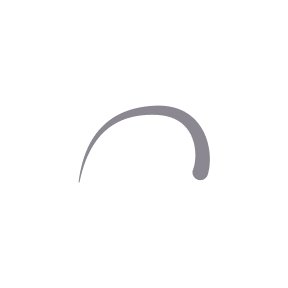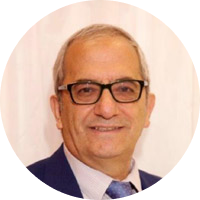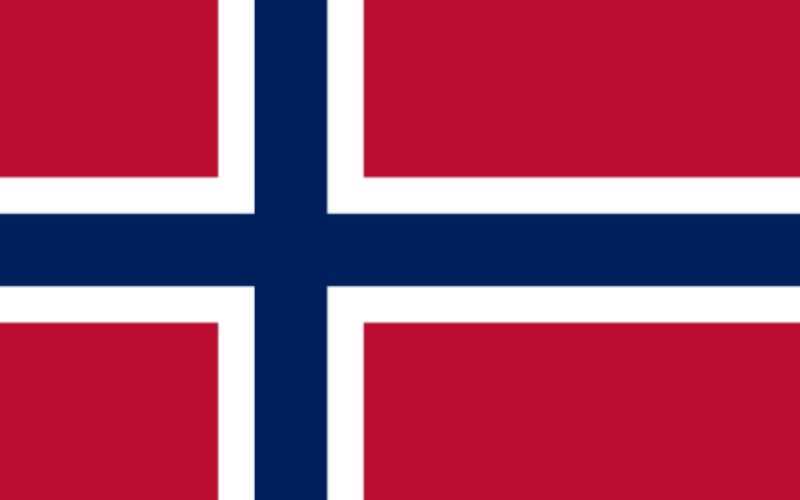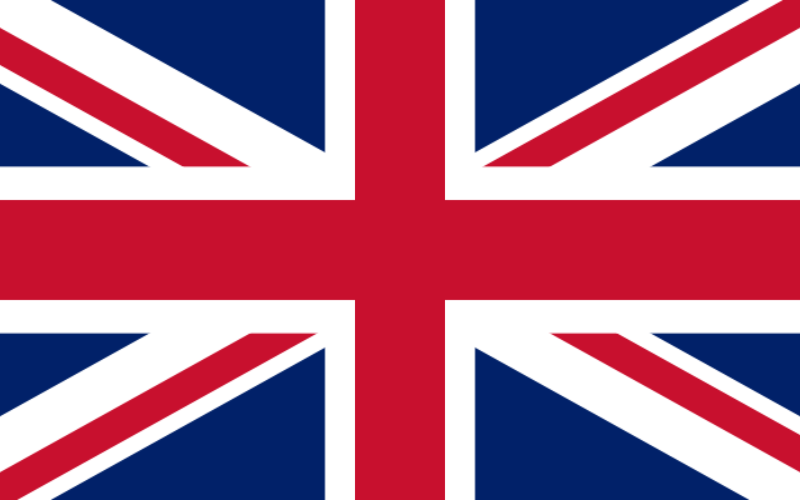
Breast implant conversion - switching/converting from implant to own fat
In this procedure, the breast implant is removed and the patient's own fat is inserted to fill in the space left after implant removal. The fat provides a natural fullness and feel and is a growing trend among those who no longer want implants but do not want to go back to a smaller size.
Some people want to remove implants as they feel that "the implants have done their job, or I'm done with them". Other increasing reasons for implant removal are ALCL (a rare type of non-Hodgkin lymphoma) and silicone disease - so-called BII; Breast Implant Illness, with symptoms such as headaches, muscle and joint pain and autoimmune diseases. In this case, the prostheses can be removed with or without the entire capsule (depending on the thickness of the capsule).
The result is better by doing this at the same time. We use the PAL Micro Air vibrating machine for liposuction, which equalizes the pressure and donor site for fat. At the same time, unwanted fat accumulation is corrected by transplanting the fat to the breasts.
In breast augmentation with own fat tissue, small tunnels are prepared under the mammary gland, or alternatively in the pectoral muscle. The fat is removed and treated before it is injected with a cannula into the breast area, either with the so-called Coleman's technique or with a vibration technique with the MicroAire machine, which creates more space for fat in the breast and stimulates healing, leading to better retention of the fat and thus better results. The amount of fat needed for the procedure depends on the desired volume in the breasts. The technique leaves very small scars of 1-2mm. When removing the old implants, the same scars from before are used so that there are no new scars. Sometimes drains are inserted for 1-2 days (see info about Breast augmentation with own fat and fig shaping and Hybrid breast augmentation with implant and fat)
The result of this type of surgical technique depends on the resorption of the injected fat, i.e. the extent to which the body itself absorbs and gets rid of the fat. Usually the fat is incorporated (grows) well in the recipient area. It must be assumed that the body absorbs up to 40% of the amount of fat in the first few months, so you fill a little more than you need (overcorrect) to compensate for this loss. There is also no guarantee that more than 40% will be absorbed in some people.
The fat must be treated gently without causing major damage to the fat cells. A centrifugation process using a simple machine to separate the fat is considered to meet these requirements. It is not uncommon for a new injection to be required; in the event of resorption of more than 40%, a new fat injection is offered within the warranty period, provided that there is sufficient fat for injection for any increase in volume or in cases where asymmetry occurs. If the fat tissue is not sucked away from the body, so that the volume is not satisfactory, this remains a natural and long-lasting result.
Breastfeeding ability is not normally affected by the techniques we use. Nipple sensation can sometimes be lost or reduced, but it often returns. We usually close the wound with stitches that dissolve on their own. It may be necessary to insert a drain (tube) to remove blood and fluid from the wound area under the skin. These are usually removed after 1-2 days at the first check-up. The operation does not provide a basis for sick leave.
Since 2008, Oslo Plastic Surgery has performed breast augmentation with its own fat tissue, and we have operated on more than 250 women. We created this service as an alternative to breast augmentation with implants. Oslo Plastic Surgery therefore has a long follow-up period for these surgery patients, who have proven to be very satisfied with their procedure and that the fat volume in the breasts has remained stable.
Fat grafting from your own body is a well-established clinical method that has been around for many years. Although small fat injections for minor defects in the breasts have been performed for a long time, it is only recently that people have started using their own fat to recreate a completely new breast after cancer or for cosmetic reasons. Breast treatment with fat of various types and causes is the clinic's main area of focus.
There have been a number of technical advances in the procedure itself and developments have led to a more gentle method so that more of the fat survives after transplantation to the relevant area of the body. In addition, the indications for using fat in the breasts have expanded to include, in addition to small breasts, asymmetrical breasts, tuberous breasts, the Hybrid method (fat & implant) and Conversion (replacing the implant with fat). These indications/requests have partly come about due to the ALCL discovery and BII (a rare type of non-Hodgkin lymphoma) and silicone disease - BII; Breast Implant Illness.
In addition, more and more people want a more natural shape and texture to their breasts (see Hybrid and ACL BII info).
We are proud to announce that we have presented our successful results at lectures and guest lectures from 2010 to so far 2018 in Oslo, Linköping, Karlstad, Helsinki, Berlin, Rome, London, Paris, Qatar, Las Vegas, Tunisia, Gothenburg, Marseilles, Paris, Cairo, Lebanon, Dubai, Manchester (UK), Italy and Copenhagen, EASAPS, IMCAS, SOFCEP and the prestigious Botti Beaitufull Breast Meeting, to name a few.
Dr. Kalaaji has also published an article on this in the medical journal "Kirurgen" and in the "Body Language journal" and in his upcoming book on fat grafting and regenerative surgery:
Plastic and Aesthetic Regenerative Surgery and Fat Grafting Clinical Application and Operative Techniques, published by Springer Nature by the chief editor of our clinic Dr. Amin Kalaaji, MD, MD, PhD.
Among our patients, the most common reason for choosing this procedure is to enlarge the breasts due to lack of volume, shape and to correct asymmetry (inequality).
It can also be women who have small and empty breasts after undergoing pregnancy and breastfeeding or women who have an underdeveloped bust.
Many people do not want to insert foreign objects such as silicone implants, but want something that feels natural. Some women already have implants but want more fullness in their breasts without having to change to larger implants. Some women, especially those who are slim and have a small layer of fat under the skin, can form small folds in the implants that can be seen and felt (so-called rippling). An alternative may then be to transplant fat.
Some choose to undergo a so-called hybrid treatment for the breast with both fat and implants. This may involve injecting/transplanting fat to the breasts at the same time as the implants are inserted or injecting fat at a later date for those who already have implants to increase volume, correct asymmetry or correct rippling caused by the implant in thin patients or for patients who have prostheses just below the mammary gland.
Other women have breast implants that they now want to remove completely and instead insert fat to replace the missing volume (conversion treatment = exchanging prostheses for fat grafting). Patients who experience capsule formation - and who initially want to remove the implants - can also benefit from this operation.
In addition, most people who want breast augmentation with their own fat tissue have an unfortunate fat distribution where they want to correct the amount of fat on, for example, the stomach, the outside or inside of the thighs, buttocks or waist/sides so that it becomes a win-win situation. Another benefit these patients seek is to avoid the scars left by implant surgery.
Breast augmentation with own fat tissue can be done as a combined procedure as in the so-called 'Mommy Makeover' with e.g. tummy tuck or buttock augmentation with own fat.
Who can be a candidate for breast lift with breast augmentation with own fat
Among our patients, the most common reason for choosing this procedure is to enlarge the breasts due to lack of volume, shape and to correct asymmetry (inequality).
It can also be women who have undergone pregnancy and breastfeeding or women who experience a loss of volume or those who have a poorly developed bust to begin with but want more volume.
Many people do not want to add foreign objects such as silicone implants, but want something that feels natural. Some people already have implants but want more fullness in their breasts without having to change to larger implants.
Some women, especially those who are slim and have little subcutaneous fat, can form small folds in the prostheses that can be seen and felt (so-called rippling). An alternative may then be to transplant fat. Some choose to undergo a so-called hybrid treatment for the breast with both fat and implants.
This could be adding fat to the breasts done at the same time as implant placement or adding fat at a later date to those who already have implants to increase volume, correct asymmetry or correct rippling caused by the implant in thin patients or to those patients who have prostheses just below the mammary gland.
Other women have inserted breast implants that they now want to remove completely and instead insert fat to replace the missing volume (Conversion treatment = exchanging prostheses for fat grafting). Patients who experience capsule formation - and who initially want to remove the prostheses - can also benefit from this operation.
In addition, most people who want breast augmentation with their own fat tissue have an unfortunate fat distribution where they want to correct the amount of fat on, for example, the stomach, the outside or inside of the thighs, buttocks or waist/sides so that it becomes a win-win situation. Another benefit these patients seek is to avoid the scars left by implant surgery.
Breast augmentation with own fat tissue can be done as a combined procedure as in Mommy Makeover with e.g. a tummy tuck or buttock augmentation with own fat.
The procedure leaves only a few millimeters of scarring, which is barely visible afterwards.
Now you can see the results of breast augmentation with your own fat tissue via a simulation program during your consultation at Oslo Plastic Surgery.
Our experience shows that not all patients who attend a consultation at Oslo Plastic Surgery are recommended breast augmentation with their own fat tissue. First, the aforementioned attitude and motivation must be present, and there must also be enough fat to remove. It is worth noting here that figure shaping (liposuction) performed during such an operation should not be about "harvesting fat from one or more places", but must be seen in the context of creating symmetry and figure adaptation to both affected areas and to the body as a whole.
Another requirement is that you must have realistic expectations of achieving medium-sized breasts. With current experience, this technique is limited by the inability to create breasts that are too large, as can be achieved with silicone breast implants. Implants will therefore be used for breast augmentation in those who are not candidates for this surgery.
During the consultation, your wishes and needs are thoroughly assessed with regard to the overall picture and the area from which the fat is to be removed, so that, as mentioned, two operations are combined at the same time, namely figure shaping (liposuction) and breast augmentation.
How to perform breast augmentation with your own fat
Fat absorption and long-lasting results
The result of this type of surgical technique depends on the resorption of the injected fat, i.e. the extent to which the body itself absorbs the fat. Usually the fat is incorporated (grows) well in the recipient area. It must be assumed that the body absorbs up to 40% of the fat in the first few months, so you fill a little more than you need (overcorrect) to compensate for this loss. There is also no guarantee that anyone will absorb more than 40%.
Handling the fat is crucial for it to heal. There are several contradictory techniques for treating the fat that is removed so that only pure fat is injected. The fat must be treated gently without causing major damage to the fat cells. A centrifugation process that separates the fat with a simple machine is considered to meet these requirements. But this is not the last word. We use a low degree of centrifugation to separate the fat, but retain the intimate fat fluid that supplies the fat cells with, among other things, the natural growth factors and stem cells that we believe give the best possible result.
It is not uncommon for a new injection to be required, and in the event of resorption of more than 40%, a new fat injection is offered within the guarantee period, provided that there is sufficient fat for injection for some increase in volume or in cases where asymmetry occurs. If the fat tissue is not sucked away from the body, so that the volume is not satisfactory, this remains a natural and long-lasting result.
Complications
Bleeding and infection are uncommon complications and in very few cases require reoperation and/or antibiotic treatment. Asymmetry, fat cysts and small calcifications may occur, and these may be removed as necessary. Anesthetic complications, such as allergic reactions to anesthetics, are extremely rare.
It has been suspected that the injected fat may have a role in the development of breast cancer. However, it has not been proven that the injected fat has a contributory role in the increase in breast cancer, or whether it could make new cases of cancer more difficult to detect with regard to both regular examination and mammography/ultrasound. see the report from the USA and the report from France
Fat injection in the breasts should not prevent the detection of cancer on subsequent MRI or ultrasound of the breasts. We recommend MRI or ultrasound/mammography of the breasts before breast augmentation and at the one-year check-up to rule out cancer. You will receive a referral from us at the consultation. Normal follow-up routines also apply.
When breast augmentation with own fat tissue is not recommended
Women with a family history of breast cancer are advised against this type of surgery. Women who are expecting a large breast volume and who have areas of excess fat on their body that need to be corrected will also not be recommended this surgery.
It should not be difficult to detect cancer after fat grafting, as we always refer to ultrasound before surgery to confirm the starting point and make it easier to detect cancer.
Does breast augmentation with own fat tissue cause breast cancer? Is it difficult to detect cancer after fat grafting to the breasts?
There is no evidence to show that fat injections to the breast are harmful in any way, nor that they cause breast cancer. This method has even been used on patients who have undergone breast cancer surgery to build up their breasts with good results. *
* Kaoutzanis C1, Xin M, Ballard TN, Welch KB, Momoh AO, Kozlow JH, Brown DL, Cederna PS, Wilkins EG. Autologous Fat Grafting After Breast Reconstruction in Postmastectomy Patients: Complications, Biopsy Rates, and Locoregional Cancer Recurrence Rates. Ann Plast Surg. 2016 Mar;76(3):270-5. doi: 10.1097/SAP.0000000000000561.
It should not be difficult to detect cancer after fat grafting, as we always refer to ultrasound before surgery to confirm the starting point and make it easier to detect cancer.
Pick-up and possible accommodation
You must arrange in advance for someone to pick you up at the clinic approx. 1 hour after the end of the operation, as you cannot drive, take public transportation or a taxi on your own. You must also have someone with you the same day and the first night.
If you live far from the clinic, we recommend that you stay overnight in Oslo, either with family/friends or in a hotel with a relative.
Hotels close to Oslo Plastic Surgery;
Hotel Gabels Hus in Gabelsgate 16.
Frogner House Apartments, Bygdøy Allé 53.
Before surgery
You must be healthy on the day of surgery. If you are in doubt whether you have a cold or similar, please contact us. The operation is not performed when you have influenza with fever, cough or other infection in the body. Before the operation, you will receive a prescription for antibiotics, possibly painkillers and Hibiscrub solution 40 mg/ml, which you can buy at the pharmacy.
The day before surgery and on the day of surgery, you should wash your entire body with Hibiscrub solution in the shower. This is a disinfectant soap that should be rinsed off with water and the skin dried with a clean towel. Put on clean clothes when you leave home. Do not use perfume and lotion. All jewelry, piercings and nail polish/false nails must be removed no later than the day before surgery and replaced 7 to 10 days after surgery.
For the best possible result and to avoid complications, it is recommended that you have a normal weight and not an excessively high BMI. If you smoke, or use nicotine such as snus or electronic cigarettes, you must quit at least 2 weeks before surgery and 2 weeks after surgery.
You should come to the surgery fasting. This means that you should not eat food including fruit or drink juice with pulp or dairy products 6 hours before surgery. You may drink water, juice, juice without pulp or coffee/tea without dairy products or chew chewing gum/drops/throat lozenges up to 4 hours before surgery. Medication that you may need to take on the day of surgery can be swallowed with 1 glass of water max. 100 ml up to 1 hour before the start of anesthesia.
You must arrange in advance for someone to pick you up at the clinic approx. 1 hour after the surgery, as you cannot drive, take public transport or a taxi on your own.
It is important that you stop taking blood-thinning medication about 14 days before the operation, preferably in consultation with your GP or us. For other medications, please consult the clinic before the operation. A lot of garlic and health food preparations should also not be consumed.
On the day of surgery
You will be met by our staff who will prepare you for the operation before the surgeon sees you. Before the actual procedure, the surgeon will go through the procedure, outline the planned procedure and answer any questions you may have. Anesthesia staff will also come and greet you and answer your questions.
When the operation is about to begin, the surgical nurse will pick you up and clean the surgical area while the anesthesia staff gives you a sedative in your arm so that you sleep during the operation. In addition, the surgeon will place a local anesthetic in the surgical area for a long-lasting analgesic effect in the surgical area after surgery, which also reduces bleeding. After the operation, you will be moved to the recovery room where you will have your own bed. You will then rest for 1-2 hours and be served food and plenty of drinks in the form of bread, yogurt and juice (remember to inform us of any allergies). Painkillers are given if necessary.
The surgeon will check on you before your return home/hotel stay and you will be cleared by anesthesia staff before you go home with an adult companion. The PVK attached to your hand will be removed before you leave.
You must use a car or taxi as a means of transportation after surgery, we do not recommend public transport or walking. You will also need a companion to pick you up.
At the surgery itself
The procedure itself takes about 1-1½ hours, under deep sedation. The incision is usually made where the old scar is located, in order to avoid creating new scars. After removing the old prosthesis, the same cavity will be used to fill with the patient's own fat. Drains are often placed in the pocket, which are usually removed 1-2 days after surgery.
Breastfeeding ability is not normally affected by the surgery or the possibility of mammography. Nor does breast augmentation increase the incidence of breast cancer (see more under FAQ).
After surgery
All patients come for a post-operative check-up the day after surgery. We recommend that you do not travel by air for the first 48 hours after surgery. During this time, a check-up appointment will be arranged in the clinic and you should come to the clinic for a check-up the day after surgery.
In the first few hours after surgery, you may feel a little tired and sometimes a little nauseous. It is important that you take painkillers as prescribed and as needed, and make sure you drink plenty of fluids for the first 24 hours. You may feel dizzy, so it's a good idea to take your time getting up and make sure you have something to lean on. For the first two days, you should rest and lie as still as possible, with your upper body raised. For the next five days, you can move gently. If you have an active job, it is a good idea to stay at home. After the operation, you will be given a special bandage that is removed after 3 days, and the tape is left on for 2 weeks. You should wear a loose bra for 6 weeks after the bandage is removed. After the tape is removed (after 2 weeks), you can shower the area and apply new tape. It is recommended that you tape the scars with skin-friendly tape for at least 2 months. Skin-friendly surgical tape such as Micropore or Steri-Strips can be purchased at the pharmacy, or alternatively silicone tape should you react to regular surgical tape.
We close the wound with stitches that dissolve on their own. We do not usually insert drains (tubes), only in very few cases are they inserted to remove blood and fluid from the wound area under the breast. These are usually removed at the clinic 1-2 days after surgery.
The final result can only be assessed after 3-6 months. Follow-up check-ups are arranged with the clinic: the day after surgery, after 1-2 weeks and 3-6 months, and a final check-up after one year. You must call to arrange the check-ups yourself, or make an appointment with the clinic on the day of surgery.
Bleeding and infection are uncommon and in very few cases require reoperation and/or antibiotic treatment. Anesthetic complications, such as allergic reactions to anesthetics, are extremely rare.
In principle, prosthesis replacement does not provide grounds for sick leave, but if you have a physical job, we recommend that you take this into account in the first few days after surgery.
Physical exercise and hard physical work should be postponed for about 2 weeks.
If correction is necessary due to complications or unsatisfactory results, this is done free of charge within one year, provided that there is a medical indication and a clear potential for improvement. This is our guarantee period.
Ask for guidance and advice
We can provide the best advice face-to-face. We will guide you to the optimal solution for your needs.

The responsible physician is Dr . Amin Kalaaji, senior consultant dr.med, specialist in plastic surgery and head of clinic at Oslo Plastic Surgery, and head of the Norwegian Society for Aesthetic Plastic Surgery (NFEP) 2018-2020.
Dr. Kalaaji holds many positions and gives lectures and training around the world. This benefits all our patients as he is always up to date on the latest and most advanced treatments and surgical techniques.
Patient safety, high quality and individual treatment are always our top priorities at Oslo Plastic Surgery.
FAQ - Frequently asked questions
Oslo Plastic Surgery answers frequently asked questions here, and we hope this will provide you with good information. We want to be helpful in the process before an operation. If you have any further questions, just write or call us.
When you want to replace the prosthesis with fat.
Some want to remove dentures as they feel that "the dentures have done their job, or I'm done with them
ALCL (a rare type of non-Hodgkin lymphoma) and silicone disease known as BII; Breast Implant Illness,
In breast augmentation with own fat tissue, small tunnels are prepared under the mammary gland, or alternatively in the pectoral muscle, where the fat is built up in layers without pressure. The fat is removed and treated in a special way before being injected with a special cannula into the breast area.
All patients must undergo a consultation before surgery. The consultation is conducted by our experienced plastic surgeon, who will ask you questions about your medical status; previous or current illnesses, previous operations, use of medication, etc. An examination will then be carried out and the surgeon will consider a possible operation.
If you are suitable for surgery, you will receive information about the surgery itself, precautions for the time before and after the procedure, and you will get answers to your questions.
For patients with long travel distances, we offer consultations by telephone and/or video consultation. We will then send you a health information form to be completed and returned to us before the consultation. You also send us some photos.
Should surgery be required, the surgeon will conduct a thorough assessment the day before the planned surgery.
You must be healthy on the day of surgery. If you are in doubt whether you have a cold or similar, please contact us. The operation is not performed when you have flu and/or fever or cough or other infection. Before the operation, you will receive a prescription for antibiotics, painkillers and Hibiscrub solution 40 mg/ml, which you can buy at the pharmacy.
In Norway, it is not allowed to show before and after pictures from cosmetic procedures in marketing or on the clinic's website. However, we can show great photos from previous patients when you come in for a consultation with the surgeon. This can be very helpful when we discuss the size of your breasts, and it can make it easier for you to imagine an expected result.
If correction is necessary due to complications or unsatisfactory results, this is done free of charge within one year, provided there is a medical indication and a clear potential for improvement. This is our one-year guarantee agreement.
Attachments:
1 - IPRAS Journal, Issue 8, 2012
2 - Kirurgen journal 2016, (January 25, 2016)




